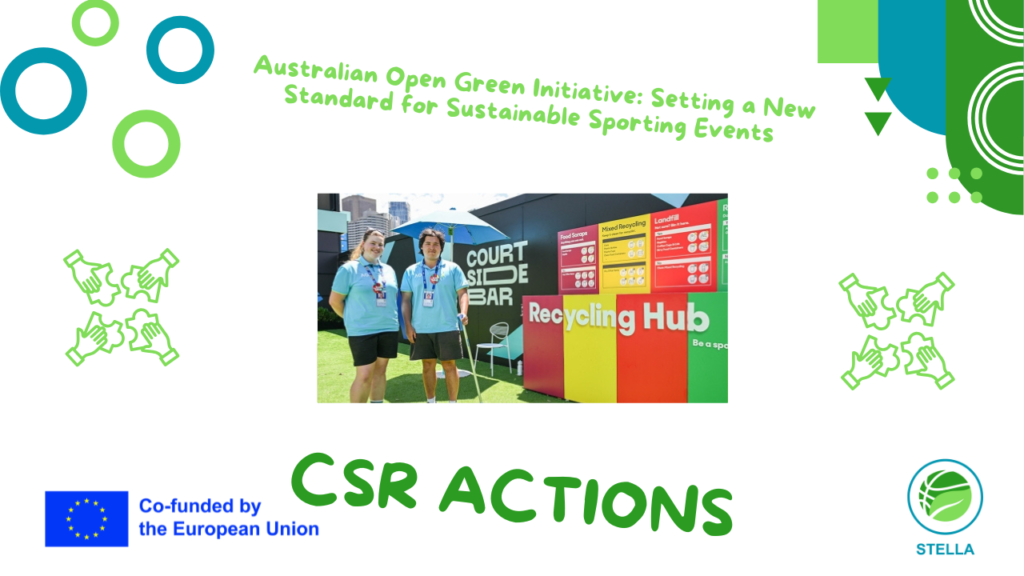
The Australian Open Green Initiative, launched by Tennis Australia, is a comprehensive approach to reducing the environmental impact of one of the world’s largest tennis tournaments. With millions of fans, staff, and players gathering annually, the event recognized the environmental strain caused by its size and operations, particularly in waste management, energy use, and water conservation. In response, the initiative was developed to make the Australian Open a global example of sustainability in sports.
Objectives:
The Australian Open Green Initiative focuses on several key objectives:
- Reduce Carbon Emissions: Decrease overall carbon footprint by implementing energy-efficient technologies.
- Conserve Water: Minimize water use through water-saving technologies and rainwater collection.
- Waste Management: Cut down on waste through recycling programs and composting.
- Community Engagement: Involve fans and local communities in sustainability efforts and promote eco-friendly behavior.
Description of the Practice:
The Australian Open Green Initiative comprises several practices aimed at reducing the event’s environmental impact:
- Energy Efficiency: All new lighting installed at venues is energy-efficient, reducing electricity consumption by up to 20%.
- Water Conservation: Innovative water-saving measures, such as rainwater harvesting and water-efficient systems, have been introduced, ensuring sustainable water use for the courts and amenities.
- Waste Reduction: On-site composting stations and extensive recycling facilities help divert a significant portion of waste from landfills.
- Green Transportation: The event encourages fans to use public transportation through partnerships with local transit authorities, reducing emissions from private vehicles.
Implementation Steps:
- Energy Partnerships: Collaborated with energy providers to install energy-efficient lighting and renewable energy solutions.
- Water Initiatives: Installed rainwater harvesting systems and water-efficient technologies at facilities.
- Waste Management Programs: Deployed waste sorting stations and composting areas to manage organic waste.
- Public Awareness Campaigns: Engaged fans through signage, digital platforms, and on-site education to promote sustainable behaviors.
Impact and Results:
The Green Initiative has shown measurable improvements:
- Carbon Emission Reduction: An estimated reduction of over 1,000 tons of CO₂ emissions annually.
- Water Savings: Reduced water usage by 25% compared to previous tournaments, with a substantial amount of water sourced from rainwater harvesting.
- Waste Diversion: Successfully diverted approximately 80% of tournament waste from landfills.
- Increased Community Awareness: Surveys post-event show a rise in environmental awareness among attendees, with many adopting eco-friendly practices after the event.
Conclusion:
The Australian Open Green Initiative demonstrates the potential for large-scale sporting events to operate sustainably while engaging communities in environmental stewardship. By integrating efficient waste, water, and energy practices, the initiative sets a standard for eco-friendly sporting events globally.
Recommendations:
- Start with Energy and Water Efficiency: Prioritize high-impact areas like energy-efficient lighting and rainwater harvesting for maximum environmental benefits.
- Engage the Community Early: Build awareness among fans and attendees through social media, signage, and workshops.
- Partner for Sustainability: Collaborate with local governments, eco-friendly brands, and sustainability experts to share resources and reduce costs.
- Track and Share Success: Collect data on environmental impact and share these results to inspire other events and highlight the benefits of sustainable practices.

 .
.
